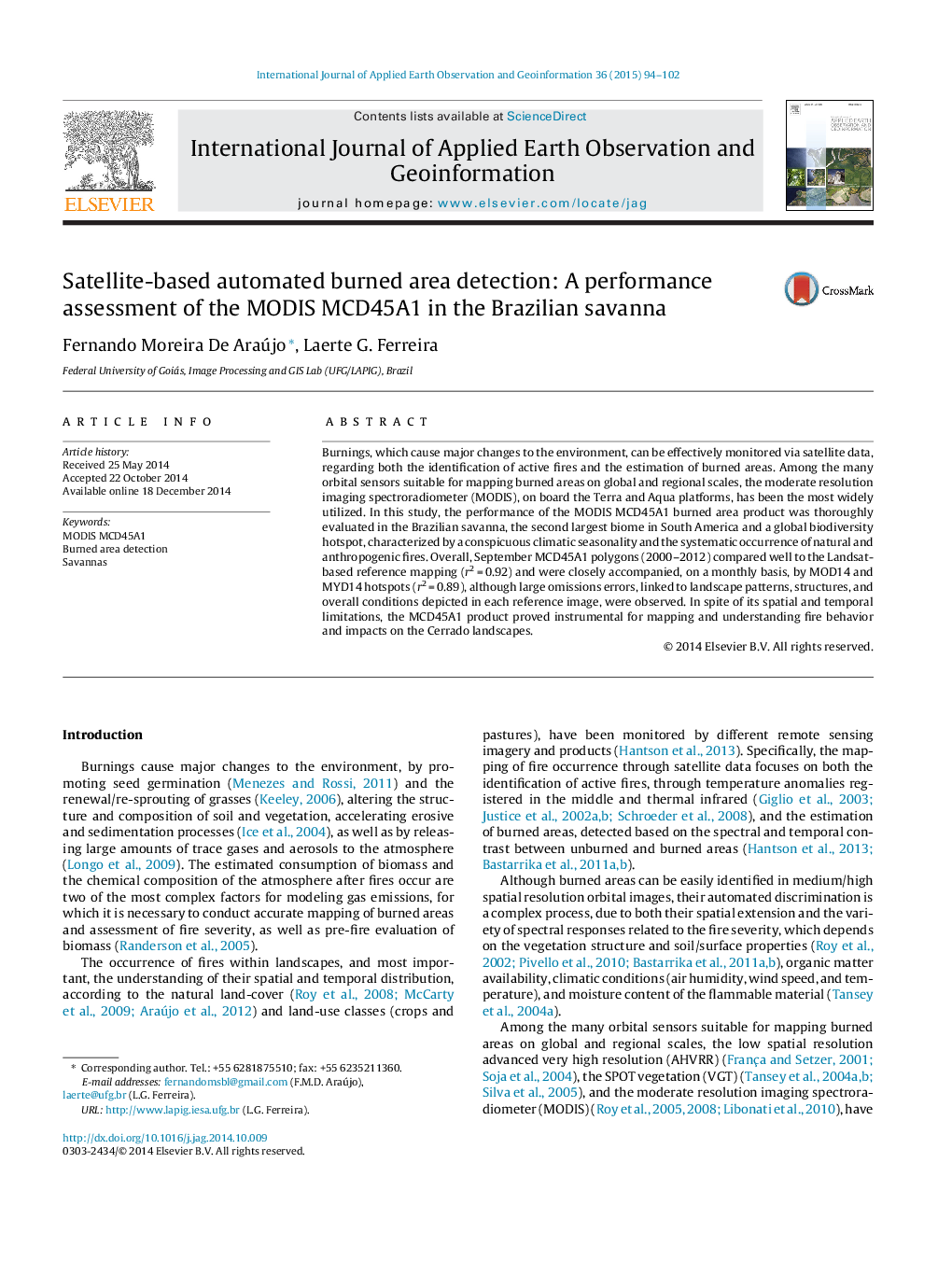| کد مقاله | کد نشریه | سال انتشار | مقاله انگلیسی | نسخه تمام متن |
|---|---|---|---|---|
| 4464742 | 1621822 | 2015 | 9 صفحه PDF | دانلود رایگان |

• All randomly selected MCD45A1 polygons corresponded to actual burned areas.
• MCD45A1 detections showed similar precision over natural physiognomies.
• MCD45A1 precision varied according to burning severity and time lag in satellite observation.
• MCD45A omissions depended on land-cover and landscape patterns and conditions.
• MCD45A1 detections were highly correlated to thermal anomaly data.
Burnings, which cause major changes to the environment, can be effectively monitored via satellite data, regarding both the identification of active fires and the estimation of burned areas. Among the many orbital sensors suitable for mapping burned areas on global and regional scales, the moderate resolution imaging spectroradiometer (MODIS), on board the Terra and Aqua platforms, has been the most widely utilized. In this study, the performance of the MODIS MCD45A1 burned area product was thoroughly evaluated in the Brazilian savanna, the second largest biome in South America and a global biodiversity hotspot, characterized by a conspicuous climatic seasonality and the systematic occurrence of natural and anthropogenic fires. Overall, September MCD45A1 polygons (2000–2012) compared well to the Landsat-based reference mapping (r2 = 0.92) and were closely accompanied, on a monthly basis, by MOD14 and MYD14 hotspots (r2 = 0.89), although large omissions errors, linked to landscape patterns, structures, and overall conditions depicted in each reference image, were observed. In spite of its spatial and temporal limitations, the MCD45A1 product proved instrumental for mapping and understanding fire behavior and impacts on the Cerrado landscapes.
Journal: International Journal of Applied Earth Observation and Geoinformation - Volume 36, April 2015, Pages 94–102